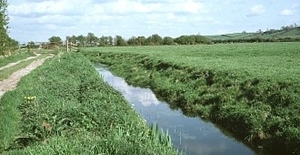 Small wet areas around the farm should be cherished. If protected, they can be rich in wildlife, providing spawning areas for frogs, habitat for newts, and for many insects like dragon and damsel flies. Ditches are favourite feeding places for herons, but they are also nesting places for mallard and, if you are lucky, maybe snipe too. In some places the now very scarce water vole will use ditches with plenty of aquatic vegetation.
Small wet areas around the farm should be cherished. If protected, they can be rich in wildlife, providing spawning areas for frogs, habitat for newts, and for many insects like dragon and damsel flies. Ditches are favourite feeding places for herons, but they are also nesting places for mallard and, if you are lucky, maybe snipe too. In some places the now very scarce water vole will use ditches with plenty of aquatic vegetation.
The key to looking after ditches is to protect them and not to treat them like farm drains. Protect the best ditches with grass buffer strips, 4 or 6 metre buffer strip or a wildflower strip which will fulfill the LERAPS requirement for agrochemical use near water.
Ditches that are wet for most of the year are more valuable than those that dry out or simply channel field run-off. Clean out ditches with care. Thinning aquatic vegetation annually may be necessary to allow water flow, but excavating the bottom sediment should only be done infrequently - if at all. The sediment is full of aquatic life and is where most of it overwinters.
Keep livestock out of ditches - especially avoid allowing sheep recently treated with a pyrethroid-based insecticide to come into contact with the water. Small traces of this insecticide are capable of killing all aquatic insect life over a big area.
*You may change your mind any time. For more information, see our Privacy Policy.